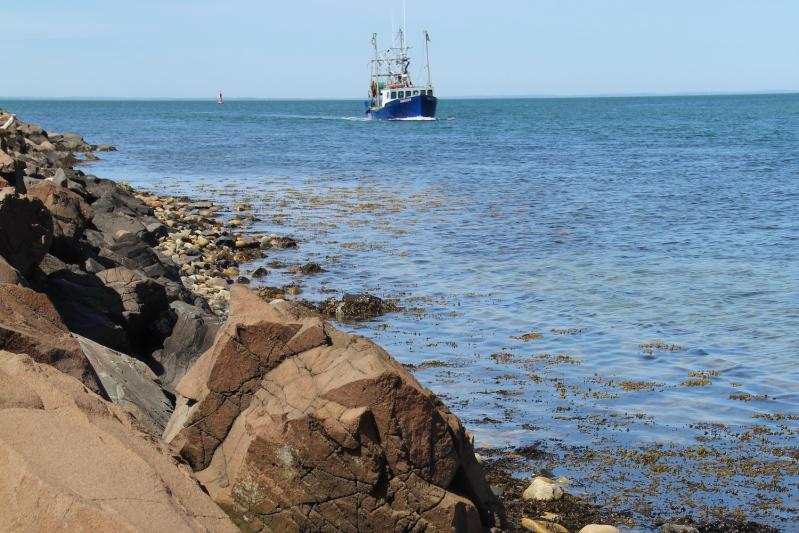When the Army Corps of Engineers sought bids to dredge Lake Montauk Inlet as part of the long-awaited Lake Montauk Harbor navigation improvement project, it received only one and it was higher than expected.
That much is clear. What happened after is apparently open to debate.
In the winter, Representative Nick LaLota pledged that a full dredge of the inlet to 17 feet would take place this fall and said that it was fully funded. In March, he worked with the town to complete a partial emergency dredge to 12 feet. After the sole bid for the full project came in higher than expected, the federal government said it was $1.1 million short.
According to his office, $10 million is the maximum the federal government is allowed to contribute, under the United States Army Corps of Engineers continuing authorities program. (A town press release said the federal government had committed $9.5 million to the project.)
Yet an Army Corps fact sheet published in December stated that the project was authorized under Section 107 of the River and Harbor Act of 1960, which lists the “maximum federal expenditure per project” as $15 million, “including feasibility study, design, and construction costs.”
The Army Corps did not return a request for clarification or provide details of the winning bid or the final project cost.
At Tuesday’s East Hampton Town Board work session, Supervisor Kathee Burke-Gonzalez said she learned of the shortfall on Sept. 3, and was given only a week to secure additional funding.
Otherwise, the project — 14 years in the making — would be canceled.
She announced a last-minute resolution at Tuesday’s work session in Montauk approving the use of money from the town’s host-community agreement with South Fork Wind to fill the federal funding gap.
Over the next 25 years, the town is set to receive about $29 million from South Fork Wind for community projects and improvements.
“Congressman LaLota told this community the fall dredge would be done and fully funded. That promise fell short,” she said in a release. “When word spread this weekend that the project might not move forward, Montauk’s fishing community was left wort would mean for their boats, their wallets, and their families.”
Representative LaLota had a very different take.
“My office has no role in the bid process or in notifying the town,” he said through his spokeswoman, Mary O’Hara.
“That is strictly between the U.S. Army Corps and the town. The corps informed the town on Aug. 28 that the lone bid came in over budget. Supervisor Burke-Gonzalez then waited six days to tell me — sending a text at 12:57 p.m. on Sept. 3, just one week before the Sept. 10 deadline. Instead of focusing on Montauk’s urgent needs, the supervisor seems more concerned about a 2026 primary. Her delay put the entire project and Montauk’s fishing industry at needless risk, especially with the Army Corps’s staging set to begin Sept. 15 and the in-water construction window closing Jan. 15.”
But that wasn’t all. In an earlier text statement, he said: “Federal procurement rules prevent simply adding funds mid-bid, but I immediately began working with the U.S.A.C.E. and the town to explore solutions,” he continued. “The town board ultimately did the right thing by filling the shortfall, and I commend Councilman David Lys for his leadership in putting Montauk’s families and fishermen ahead of partisan politics. The town investing $2.6 million to unlock $10 million in federal funding is a very good deal for East Hampton taxpayers.”
He also blamed the supervisor for failing to obtain easements in a timely manner.
“That negligence delayed the project, created dangerous shoaling, grounded vessels, and shut down Montauk’s fishing industry,” Mr. LaLota wrote. “I didn’t create the problem, but I stepped up because I promised to work with anyone when Long Islanders’ livelihoods are at stake.”
Patrick Derenze, the town’s public information officer, said the town was in constant contact with the Army Corps throughout the easement process.
“After a lengthy coordination period between the U.S.A.C.E. and the New York State Department of Environmental Conservation to establish a dredged material placement site,” he said in a text that the Army Corps “provided the necessary authorization in late June 2024. Because the notice followed that extended review, surveying was delayed. The town acted immediately once the authorization was received, working directly with property owners, obtaining the four required easements, and completing the legal filings.”
“There is a certain irony here, with windmills bailing out the federal government,” Councilman Tom Flight said at Tuesday’s work session. (The Trump administration signed an executive order earlier this year pausing permits for new wind projects on federal properties.)
“It’s a great thing. This is very much what Montauk is about,” he said. “Without our fishing fleet, we’re a very different town and ensuring this harbor stays navigable is key.”
In the town’s press release, Ms. Burke-Gonzalez added: “Here in East Hampton offshore wind is not only powering 70,000 homes with clean energy, it is also keeping boats in the water, protecting the livelihoods of our fishing families, and ensuring that Montauk Harbor remains a safe haven for mariners across the region.”
Councilman Lys described the project at Tuesday’s meeting while referencing a series of maps.
The channel will be brought down to 17 feet, with the option of an additional two feet, and extended just past the tips of the jetties, where shoaling is most problematic. Massive rocks within the channel will be removed and transported to Mattituck.
“You can see how much it’s shoaling into that area. Since the emergency dredging, it is shoaling in once again, and it is critical to keep this open,” he said.
Roughly 150,000 cubic yards of dredged fill will be deposited west of the western jetty at Mermaid Beach, extending the shoreline.
Some fill will be used to create a slope from the beach to dissipate wave energy. Littoral drift historically has moved the sand west from that location, said Mr. Lys, meaning that properties between the jetties and Culloden Point that have undergone erosion in recent years may benefit.
“We had hours to complete this,” Mr. Lys said. “This is showing the town board finding solutions instead of hurdles.”
“With what’s happening with our federal government,” said the supervisor, “it feels like this is our one shot. If we don’t have the funding in place to do this project, I don’t have the confidence that this project is going to go through.”
In a final curveball, the winning bidder reportedly said the work would be done over two years. (The Army Corps had not responded to The Star’s requests for comment by press time to independently confirm that detail.) So, it’s possible that the work may not be completed, or even begun, until next fall.




